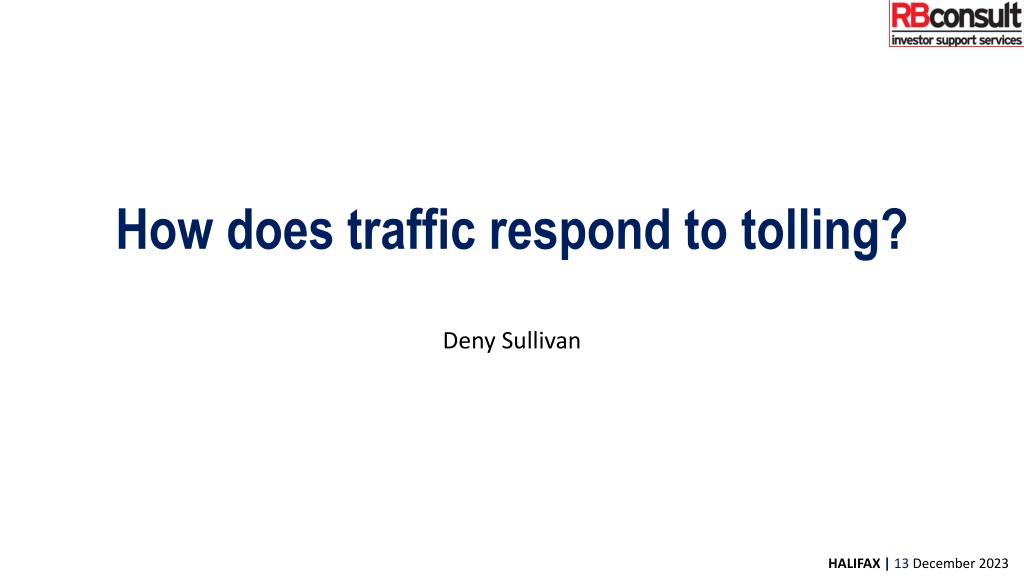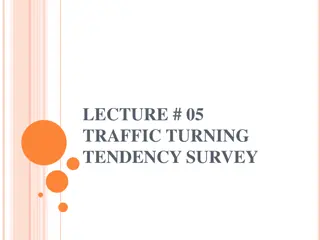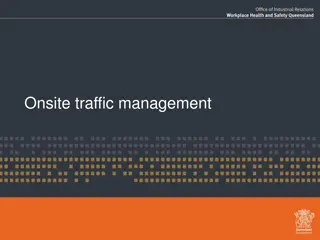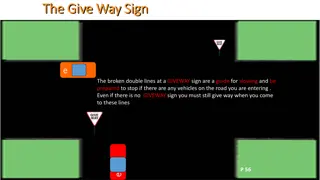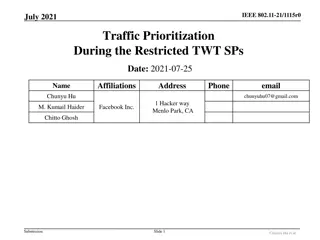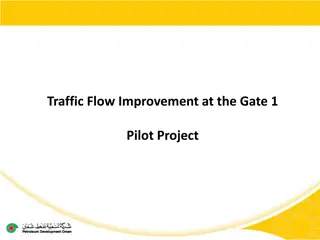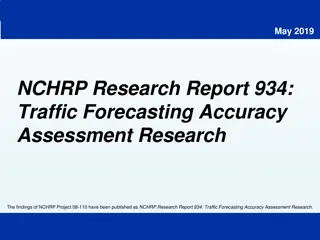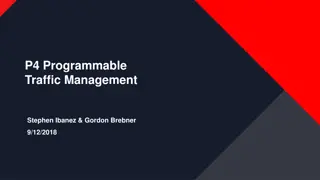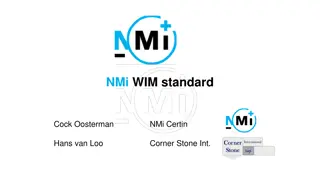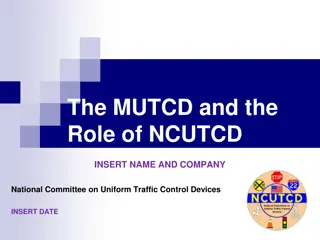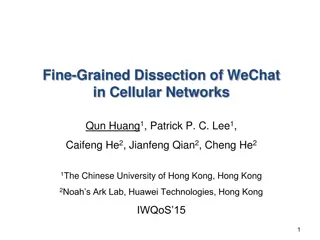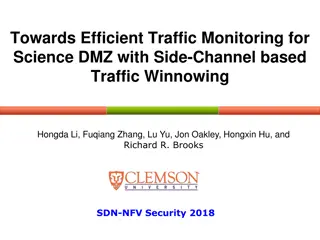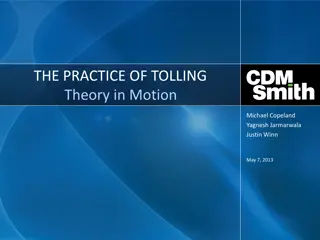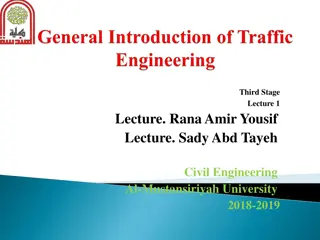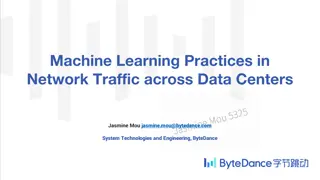Understanding Traffic Response to Tolling: Insights from Research
Exploring how traffic reacts to road user charging, this study investigates the impact of tolling on traffic flow and revenue. With a focus on price elasticity and traffic modeling, the research examines the complexities of toll implementation and its effects on congestion and infrastructure needs. Data collection from various sources across different countries provides valuable insights into the behavior of traffic in response to tolling schemes.
Download Presentation

Please find below an Image/Link to download the presentation.
The content on the website is provided AS IS for your information and personal use only. It may not be sold, licensed, or shared on other websites without obtaining consent from the author. Download presentation by click this link. If you encounter any issues during the download, it is possible that the publisher has removed the file from their server.
E N D
Presentation Transcript
How does traffic respond to tolling? Deny Sullivan HALIFAX | 13 December 2023
Who We Are Robert Bain Sylvain Senechal Ben Cimon Deny Sullivan Focus: Commercial/Technical Due Diligence of Road + Rail Economist/Modeller (BA/MA Econ.) Engineer (PhD/CEng) Modeller (MBA/CFA) Economist (BSc Finance/CFA) Ex-Standard & Poor s Ex-Brookfield London-Based Ottawa-Based Halifax-Based Strong Financial-Sector Backgrounds Prepare/Review Demand & Revenue Forecasts International Clients & Projects (top-20 infra investors) Expert Witness: Litigation & Arbitration 2
Research Question How does traffic respond to the start (or end) of road user charging? The Investor s question: How much traffic/revenue will be lost once the road is tolled? The transportation planner's question: How might tolls reduce congestion and infrastructure needs? 4
Background: Price Elasticity Price elasticity has a literature Vehicle traffic is inelastic on the margin (-0.1 to -0.3) Spoiler: Tolling impacts are large vs. elasticity power of free 5
Background: Traffic Modelling Traffic models are imprecise Sound familiar? Cross City Tunnel in Sydney, Australia 100,000 99,967 90,000 87,088 80,000 70,000 Traffic models rely on complex interactions of inputs and assumptions Free Month 60,000 50,000 Bankruptcy 50,000 Actual Traffic Actual Traffic 40,000 No Data 30,000 Another Bankruptcy 20,000 25,000 Toll On 10,000 0 2005 2007 2009 2012 2014 2016 6
Data Collection Public toll road data is rare Collected data from: Media articles Government reports Academic / practitioner research Traffic counts / client data 7
Dataset 56 data points across 14 countries Turn off 4 1 10 1 16 Turn on 7 12 14 7 40 Total 11 13 24 8 56 Bridge Cordon Road Tunnel Total Bridge Cordon Road Tunnel 8
Distribution of results Traffic declines from tolling often range between -20% and -45% -18% Median -28% -46% 9
Summary statistics Modest differences by facility & geography type, but wide variation everywhere 10
Its about time Drivers do cost-benefit calculations when deciding to use toll roads Cost per Minute Saved Illustration High tolls vs. time saved will decline most from tolling (or vice-versa) Testing for this has issues 11
Where did the cars go? Carpooling Change of route Spain always has a toll-free parallel road Change of mode London congestion boosted bus traffic 30% Change of destination Sanibel Causeway in Florida attracting weekend beach-goers Trip destruction Seattle SR-99: Half of the decline in traffic not seen on other roads or buses 12
Conclusions Investors should be cautious investing in about to be tolled facilities and governments should not auction roads until they are tolled Many drivers on the road are not willing to pay directly to use the road Congestion pricing could have greater effects than expected Tolling is usually set for cost-recovery 13
